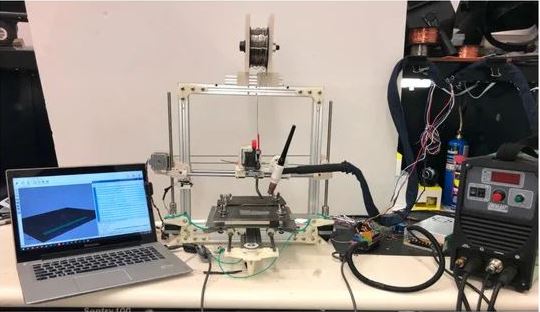Researchers develop WAAM 3D printer at $1000 an new breakthrough in the area of metal additive manufacturing.
Metal additive manufacturing (AM) technologies have attracted a lot of interest in recent years due to their distinct benefits over traditional manufacturing procedures. Metal components are exceedingly expensive to make with current powder-bed fusion AM methods, and machines are hard to build and maintain. Wire arc additive manufacturing (WAAM) is a revolutionary way of making metallic components at a low cost that combines welding with 3D printing. Gas tungsten arc welding (GTAW) is integrated into a gantry system in this work to build a new metal additive manufacturing platform.
The design and construction of a simple, economical, and effective WAAM system is presented, and the most commonly encountered difficulties and possible solutions are discussed. The impact of process parameters on the quality of two additively produced alloys, plain carbon steel and Inconel 718, was investigated. The wire arc AM system’s system design and troubleshooting are presented and addressed.
In this study, a low-cost wire-arc additive manufacturing (WAAM) system was designed by the researchers that offers an alternative solution to develop and repair high-value metallic components. The applications include repair and manufacturing of parts such as fittings, implants, heat exchangers in aviation, automobile and medical industries . The system incorporates an open-source 3D printer and gas tungsten arc welding (GTAW) process. The system costs around $1000 and includes open source fused deposition modeling (FDM) 3D printer parts, microcontroller, TIG welder, and specially designed and produced parts, such as a torch holder, among other components. The computer and gas container were excluded from this cost estimate. This design approach eliminates the use of expensive equipment, such as a robotic arm, thus reducing the price of the machine drastically. This low-cost AM machine also implements an open-source architecture.
Read more about this research paper in the Journal of Manufacturing and Material Processing


